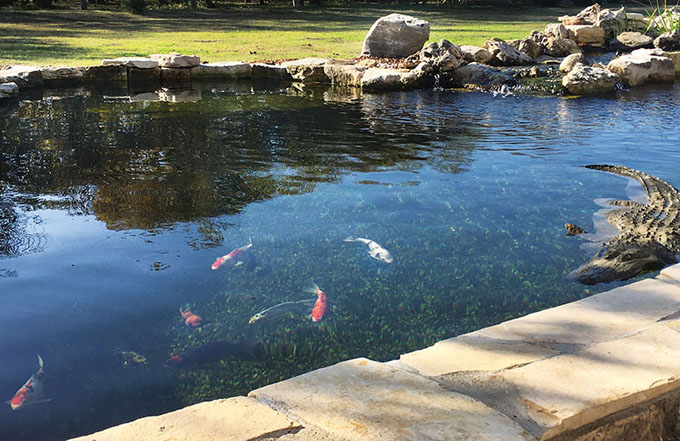
No backyard oasis would be complete without a beautiful koi pond or water garden as its centerpiece. We make a living pouring our experience, knowledge, God-given artistic ability and personal blood, sweat and tears into creating masterpieces that our customers will love for years and years to come. We as professionals can build some amazingly stunning waterfalls, streams and outdoor living areas, but in almost every situation, I see one consistent flaw across our industry. We too often build for the initial wow factor and rarely for the low-maintenance, long-term beauty. We build beauty above the water but tend to poorly design the pond floor environment, creating a future mess that requires constant cleaning and maintenance.
The perfect pond is not the pond that is the most beautiful on Day One; it’s the pond that is beautiful every day of the year, year after year, without having to be cleaned routinely. In other words, it’s a pond that is self-sustaining and maintains below under the water line for as long of a time as it remains beautiful above the water line.
Ponds should have the same artistic detail and professional expertise above and below the water surface, with clean floors rather than accumulated sludge,. This is what you should be building toward.
Keep the Floor in Mind
No customer wants to look into their relatively new pond and see greenish-brown sludge and algae at the bottom. This accumulation of biowaste detracts from the rest of the beauty of the feature and causes the eye to stray from the beautiful workmanship and colorful koi. This biowaste is also going to cause future algae and water color issues as well as hinder circulation and oxygen levels. We can engineer ponds that work perfectly above and below the water level, thereby providing the greatest possible offering to our customer. So, let us start building ponds with the pond floor in mind.
First, we have to create circulation at the bottom of the pond. Using bottom drains, aeration systems, circulation jets or undergravel intake systems, we can create water flow at the bottom of the pond to keep it clean. We need to engineer a flow system that does not allow things to settle, but instead keeps particles suspended until they flow into the pump and filter system, where they can be expelled from the pond.Properly locating bottom drains and aeration systems will direct water flow and remove the waste from the pond. If you cannot install bottom drains, using floor jets to keep the particles from settling is a good second option. Proper flow rates for the pond are also key. We should always be circulating our koi pond once an hour, but that can and probably should hold true to water gardens as well. Keep in mind, you do not have to stop at that rate.
Circulating two to three times per hour is not a problem, and when done properly, it could help with keeping substantial flow rates along the bottom of the pond.
A high-quality filter is a must to capture the waste as it is removed from the pond. When space allows and the system is capable, a sieve filter or sediment chamber is a great addition to external pump and filter systems to help collect the solids prior to reaching the main filter. Bog filters are great for catching all the waste if there is enough room in the design. For tighter spaces, I go with an Aqua UV Ultima II partnered with a Matala stainless UV clarifier. We do not want to work so hard to get the sediment to stay off the bottom and then fail to install a filter that prevents it from returning to the pond. When it is feasible, a final polishing filter is great for collecting the finest of particles, so long as it is easy to access and clean, as this may need to happen frequently.
Avoid the Rocks
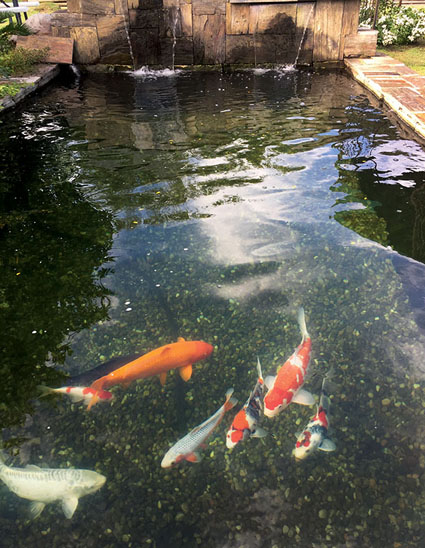
Rocks and pebbles in the bottom of the pond are bad for circulation. They will add to your sludge-accumulation issues, and as the sludge falls into the crevices between the rocks, it stops the water flow and creates a biowaste mess at the bottom of the pond. Beneficial bacteria can only break down waste if there are adequate oxygen levels.
Without water flow between the rocks, there is no oxygen. This causes numerous safety issues for the pond and the fish over time, but plain and simple, it just looks ugly. I have consulted with customers who thought their pond was 2 feet deep with no rocks on the bottom, only to find under a foot of sludge a bed of gravel and extreme levels of stench, anaerobic gases and dangerous toxins. Rocks are pretty to look at, but not for very long if they are just thrown in the pond to hide the liner. Keep the bottom of the pond clean and healthy to allow the circulation system to work properly. Keep particulates from settling by laying great rock work above the waterline and leaving a clean liner or concrete floor at the bottom of the pond.
The exception to the rule is undergravel intake systems. These can flow water down through the floor rocks and out to the pump, serving as the main intake system for the pond. This constant flow of water through the rocks creates a biofiltration system that breaks down the waste before it accumulates, keeping the rock floor beautiful year after year. I love designing these and have had great success coupling them with an Ultima filter and Matala UV clarifier. Our customers love looking 5, 6 and even 7 feet deep and seeing all the different colors of rock at the bottom. The colors of koi can pop in contrast with the natural rocks backdropping them, and such a pond requires no floor maintenance. With perfect water quality, the pond looks like it was built yesterday, both above and below the water line, every day of the year, year after year.
Add-on Flooring
Often the most challenging situations are not our personal builds, but ponds that someone else built. These present prime opportunities to improve the pond and our customers’ enjoyment by engineering a clean-floor system. Ponds without bottom drains have to be retrofitted with circulation jets, retro suction drains or possibly an undergravel intake system. All are options that will provide immediate results that your clients will praise you for.
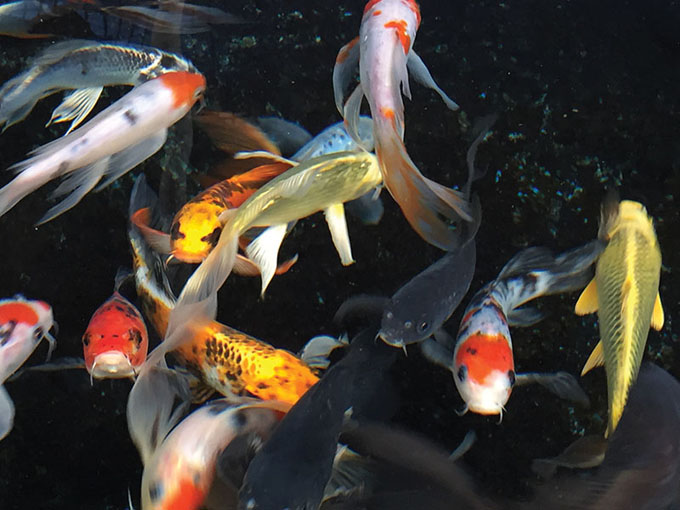
These improvements will most likely require an additional pump for the added necessary circulation, creating an opportunity for you to add a new water feature to the pond or improve the flow they currently have. These changes will be for naught, however, if the filter is inadequate. So, make sure the new design has everything it needs so that it can be as successful as it can be.
What an amazing offering to take a pond or simple rebuild that requires routine cleaning and leave the customer with a pond that has a clean floor and all the equipment it needs to stay clean from here on out. Can you imagine the number of referrals coming your way if you could rebuild it better than new?
Maintain to a Cleaner Standard
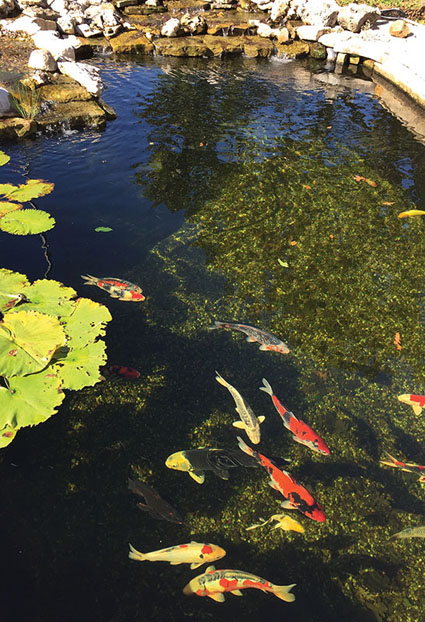
When you have to clean a pond because it is not designed properly to sustain a clean floor, you want to do so in the least intrusive way possible to minimize damage to the ecosystem. If you can maintain the healthy bacteria levels and keep most of the living water in the pond, you can avoid typical post-cleaning issues like fish loss, green water and ecosystem crashes.
Vacuuming the floor of the pond is by far the best way to clean the pond, and with new offerings like the Matala Cyclone Vac that has dual pumps for constant vacuuming, the process is relatively quick when done correctly. Vacuuming is easiest and most successful on bare floors without rocks and gravel; however, with the Cyclone Gravel Head, you can take care of most issues if there are only a couple of inches of rock on the pond floor. The mere ability to vacuum the floor is reason enough to leave the deepest floor barren, without rock. If you are cleaning ponds, this type of equipment is well worth your investment when you consider all the benefits to the pond ecosystem and the happy customer that receives a pond cleaning with no negative side effects.
Digesters & Floor Pellets
For all the time between cleanings, the use of organic digesters can keep the pond floor looking quite clean and the filter systems strong and healthy. Do not underestimate the impact a high-quality digester can have on the entire pond ecosystem, as it removes excessive nutrients, waste and nitrates from the water table. Your customers will love the look of their pond floor if proper doses are applied routinely to handle the waste, especially if the original pond was not designed correctly.
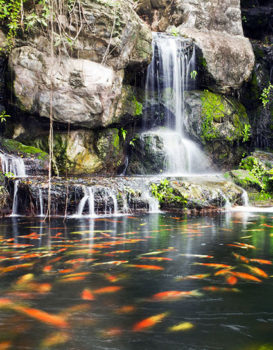
Sludge pellets can clean the buildup between the rocks at the bottom of ponds to reduce the risk of biomass. They can be used to reduce the amount of sludge over a period of time without having to vacuum or drain and clean the pond. We have used our sludge pellets to clean countless pond floors caked in years of sludge buildup without the need to drain or vacuum the pond. We have even used them to clean the gravel in bog filters and improve flow rates through all types of biofilters.
Ponds are beautiful, serene places for us to gather, appreciate and relax. We build them for our enjoyment and to bring home a permanent piece of natural beauty.
Whether we are building new designs, rebuilding old ones or offering cleaning services, we can elevate our services to create higher customer satisfaction and set ourselves apart from competitors. All it takes is a focus on the proper build below the water line that is more or less equal to the effort we place on the rock work above the water. My most popular ponds are not the ones with the largest waterfalls or best rock work; they’re the ones with pristine floors. The ponds that look brand-new every day are the ponds my customers want in their backyards and the ponds I enjoy engineering the most.



I dug a pond 4′ deep that is spring fed. I have clay soil, so it looks like it should have no problem sealing around the side and bottom. The clay is red though and I would like to cover with gravel. I have read that a gravel bottom works if a filter system is used in the gravel. With it being spring fed, should I even use a liner?
Thanks.
Marvin, Great question and I am glad you asked. I would always recommend a liner for cleaner, clearer water, however the liner will conflict with your Spring. I have customers that have tried to use a liner with a spring and have had huge problems from the water pressure coming out of the spring. Unless you are able to direct that spring water to enter the pond from the top rather than below, you are going to have issues with a liner. With that though, the red clay will create a clarity issue and a filtration challenge. The clay will enter and clog your filter system in some way and fashion so preparing for that with easy clean-out valves, reverse flow systems, etc would be critical. Keep it mind though that you may be over-building here. A Spring-fed flow through pond is IDEAL and depending on hourly turnover and temperature, you may not need a filtration system at all! You may merely need to circulate water with an aeration system or mid-lower table return jets to keep biowaste from settling on the bottom. We rarely attempt a filter system in Clay ponds due to lack of effectiveness. Your gravel filter system laid on clay will not work as the clay and gravel will eventually merge and your piping will fill with clay. You could layer ricker rocks on the bottom to keep the clay somewhat suppressed if you would like without a filter piping system. With all of this being said, I would recommend in your unique situation finding a local expert that can come out and do an on-site consultation. Someone with a lot of experience and references.